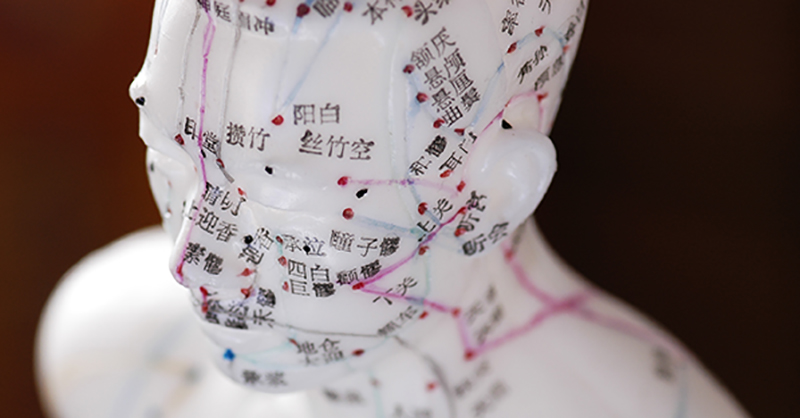Did you know that the ancient Chinese practice of acupuncture can play a part in treating several common ailments and pains? While some patients get nervous at even just the thought of needles, many who try acupuncture report experiencing emotional and physical benefits from the practice.
Recent studies in England have tested the effects of acupuncture in conjunction with counseling, showing very positive results on patients who have suffered from bouts of depression. Another study published in the Medical Journal of Australia tested the effectiveness of acupuncture on people with migraines, lower back pain and sprained ankles. Patients reported that the relief was comparable to when they took medication. Acupuncture can also be used to help prevent muscle atrophy, treat those with hypertension and treat some of the symptoms associated with fibromyalgia and menopause.
Up to 95% of menstruating women experience severe pain, also called dysmenorrhea, which can be caused by a diagnosed issue or whose cause can be completely unknown. Guess what has recently been tested for providing relief during periods? Yup, acupuncture. “It was found that the women undergoing acupuncture more frequently experienced more significant improvements in period pain intensity and related symptoms, as well as in overall quality of life,” the study reports.
The U.S. Army has also discovered how beneficial acupuncture can be. Col. Erica Clarkson was exposed to this medicine in the early part of her career, while deployed to Kosovo as a chief physical therapist. From there, she spent her free time completing acupuncture training and now incorporates holistic healing into her treatment of patients.
What was old is new again
As one of the oldest practices of traditional Chinese medicine, acupuncture’s exact beginning is a topic of great debate. One thing is for sure — it hasn’t always been widely accepted by those in the medical community.
The Yellow Emperor’s Classic of Internal Medicine, written by Huandgi Nejing, is one of the first documented works that discusses acupuncture as an “organized system of diagnosis and treatment.” The British Society for Rheumatology took great interest in the origins of acupuncture and its path to popularity today.
In the 18th century, science was becoming more popular than superstitious and traditional beliefs. As a result, acupuncture began to take a back seat. Acupuncture was even called a “lost art” in the mid-1700s and in 1822, the Chinese Emperor excluded the practice from the Imperial Medical Institute. Experts say the decline in popularity was due to the popularity of scientific treatments including prescriptions and medications. Acupuncture was also often associated with the lower classes and declared unfit for scholars to practice.
The practice bounced back — but only to be banned again in 1929, again in favor of more science-based medicine, to help the Chinese appear more Westernized. It may have declined in popularity in China, but the rest of the world was starting to get intrigued by acupuncture.
Today we see acupuncture as a complementary and alternative medicine (CAM). In 2007, about 4 in 10 adults and 1 in 9 children used CAM methods. Among the most popular methods mentioned are acupuncture, massage and yoga.
Physicians today are much more likely to be knowledgeable about acupuncture. Some are even trained to perform it! The American Academy of Medical Acupuncture began with less than 50 members in 1987 and has grown to over 1,600 members, all of which have an M.D. or D.O.
Get started on this health care career path
As with all health care professions, requirements for becoming an acupuncture/Oriental medicine (AOM) practitioner vary from program to program and from school to school. Generally speaking, a bachelor’s or associate’s degree is required to progress on to an AOM program.
Most acupuncture practitioners spend three years in school studying acupuncture, with an additional year if they choose to study Chinese herbology as well. There is graduate level training for AOMs at over 50 colleges in the U.S. After successful completion of a graduate level program, there is a national certification exam offered by the National Certification Commission for Acupuncture & Oriental Medicine (NCCAOM), which is accepted in all of the states that license AOM except California.
Most insurance companies don’t cover acupuncture, which can be beneficial to the practitioner and the patient. As a provider who doesn’t accept medical insurance, you might find relief in more flexibility when it comes to treating your patients.
An acupuncture practitioner can work in a variety of environments, including hospitals, birthing centers and in private practice. There are other areas that compliment AOM that are often of interest to acupuncturists, like teaching, translating or working an herb supply company.
Are you ready to for a career in acupuncture? Get started on this health care career path today.


